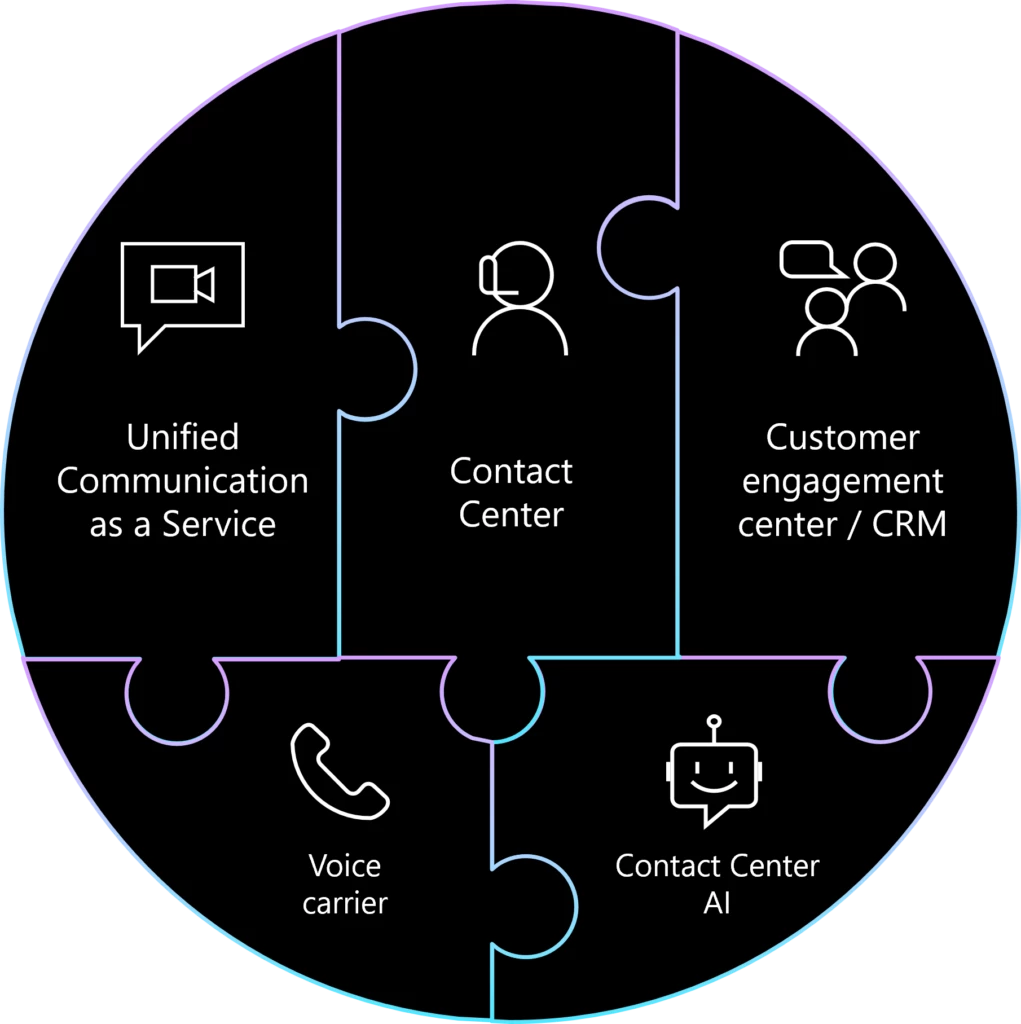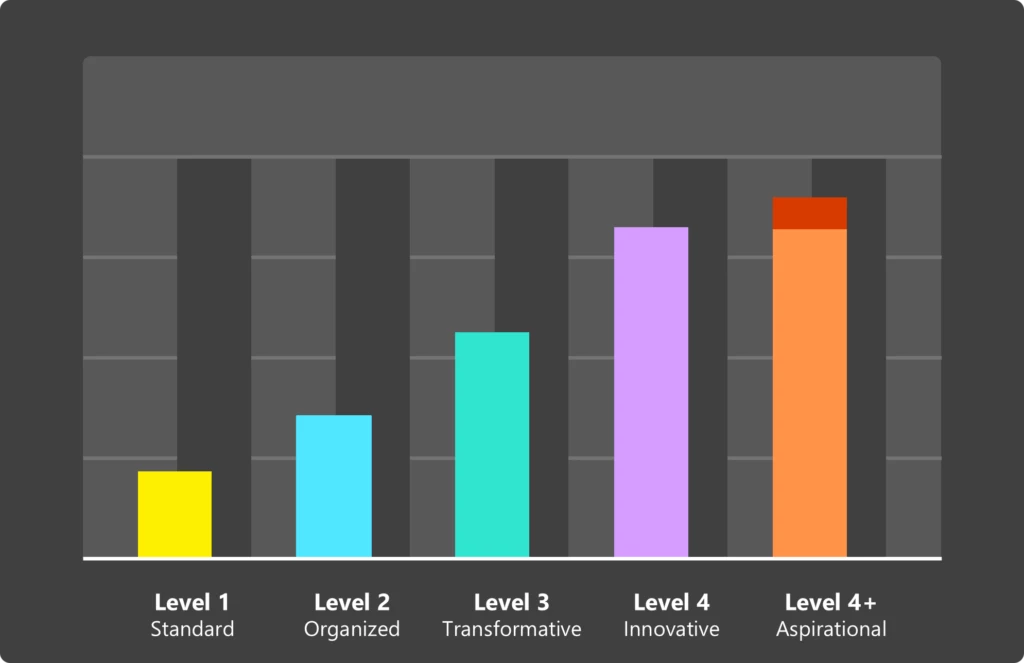This article is contributed. See the original author and article here.
Service leaders face continual challenges in evolving the service organization to meet customer expectations, putting their brand value and customer loyalty at riskas a recent study shows, 96 percent of customers will leave a business after a bad customer experience.1 They feel either lost with disruptive changes in the contact center and customer service marketplace, or helpless on where to start, or confused on what to adopt and what to disregard, or fear being all over the map while making investments aligned with the business goals.

Service sophistication model
Assess and improve the effectiveness of your organization’s current service experiences.
Evolve service organizations to meet customer expectations
The business goals differ across service organizations, as some are managed as a siloed cost-center, some are intent on matching up with industry peers on competitive metrics and key performance indicators (KPIs), some have embraced digital transformation to the extent that it enables data visibility and automation across the organization, and a few view them as profit centers, ready for the future with AI-powered experiences.
Regardless of where they are in this spectrum, service leaders always want to know:
- What is happening in the customer service and contact center market today, and how does it matter to us as a service organization?
- How can I assess where our service level is positioned, and how can we prepare for the future?
- What service solutions are available to help us?
We had a chance to discuss this topic with a leading analyst. Watch our guest Kate Leggett of Forrester discuss the state of service and how to elevate and deliver more sophisticated customer service:
This embed requires accepting cookies from the embed’s site to view the embed. Activate the link to accept cookies and view the embedded content.
Deliver the best customer service experience with consolidated solutions
As they say, change is the only constant, and it aptly applies to the different categories that define the contact center and customer service market today. Broadly speaking, the lines are no longer distinct between unified communications as a service (UCaaS), contact center, and the customer relationship management (CRM) market categories. They are all transitioning to cloud, and the capabilities are overlapping to the extent possible. They are powered by contact center AI (CCAI) and carrier voice technology innovations that drive the efficiency and experience of customer service interactions. This also shifts the preference from best-of-breed solutions which have a side effect of fragmentation, to the possibility of consolidated solutions that can deliver the best experience.

Given the myriad capabilities from the technology innovations and market categories, and the fact that service organizations are across the spectrum, what service leaders need is a convenient way to map them to different service levels of sophistication. Essentially, a service maturity model that groups major capabilities and maps them to appropriate levels in the spectrum. This allows service leaders to visualize where they are relative to the market and determine at what level they’d like to be based on their business goals, investment, and timeline. In addition, they can decide practically and prioritize on the capabilities that matter to themacross voice and digital channels, self-service, agent productivity, and service operations.
Receive a customized service level guidance report
We are with you on this evolution. Microsoft is pleased to provide the service sophistication model to help service leaders chart their course. It is a simple web-experience that should take less than five minutes. The model groups capabilities into personalized customer engagement, including omnichannel access and routing, scale, and automation with self-service, empowering agents with productivity tools and AI-powered and analytics-driven service processes and workflows. And the service leader would look at four different levels of service in each group and pick the option that best describes their organization. As an example, do they have just a call center, or do they include some self-service capabilities, or do they already deploy a contact center with digital channels, or are they ahead with AI-powered personalized experiences? Once they answer a few questions, they will receive a customized guidance report on where they are and where they can go incrementally to the next level.

To learn more about how Microsoft can help service organizations evolve, or to take the assessment, visit Microsoft Dynamics 365 service levels.
Transform your customer service journeys with the leading capabilities
Sometimes, evolution is about leaping ahead rather than taking incremental steps. What if you want your organization to transition to an altogether new experience? We also offer you the full picture on the possibilitiesjust take a moment to register and download the service sophistication model whitepaper. It’s worth the read to understand comprehensively the spectrum of service levels and capabilities, the pain points and metrics that matter, where the industry is going, and where service leaders can take their organizations.
Personalize the customer service journey with Dynamics 365 Customer Service
Microsoft is in a unique position to bring together the service solution that addresses the different categories and the spectrum of capabilitieswith Microsoft Teams for unified communications and collaboration, omnichannel and CRM capabilities with Microsoft Dynamics 365, and CCAI with Nuance, along with Azure cloud.
This embed requires accepting cookies from the embed’s site to view the embed. Activate the link to accept cookies and view the embedded content.
Evolve at your pace with an architecture that fits your service experience
The Microsoft Digital Contact Center Platform brings these products together, along with partner innovations, as an open, flexible, and collaborative platform that allows service organizations to keep their existing contact center infrastructure, and create the best experience for their customers.
Learn more about how Microsoft Dynamics 365 Customer Service empowers your agents to personalize the customer service journey.
On a final note, our guidance is not just about service levels of sophisticationwe also have an array of reference architectures to fit different customer scenarios.
Be sure to check out Microsoft Digital Contact Center Platform documentation, including a link to reference architectures to guide the deployment that can make the service experience you have in mind into reality.
The post Evolve the service level of sophistication with Dynamics 365 Customer Service appeared first on Microsoft Dynamics 365 Blog.
Brought to you by Dr. Ware, Microsoft Office 365 Silver Partner, Charleston SC.


Recent Comments